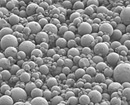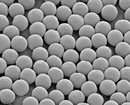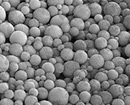Fine Particles

Chemisnow™ | Functional Fine Particles
Our Chemisnow™ line is a functional fine particle developed with proprietary polymerization technology.
It is a copolymer-based styrene methyl methacrylate product and exhibits different properties through the control of crosslinking and functional groups.
It is suitable for a wide range of applications, as customers can unlock new functions by adding or mixing it with their base materials.
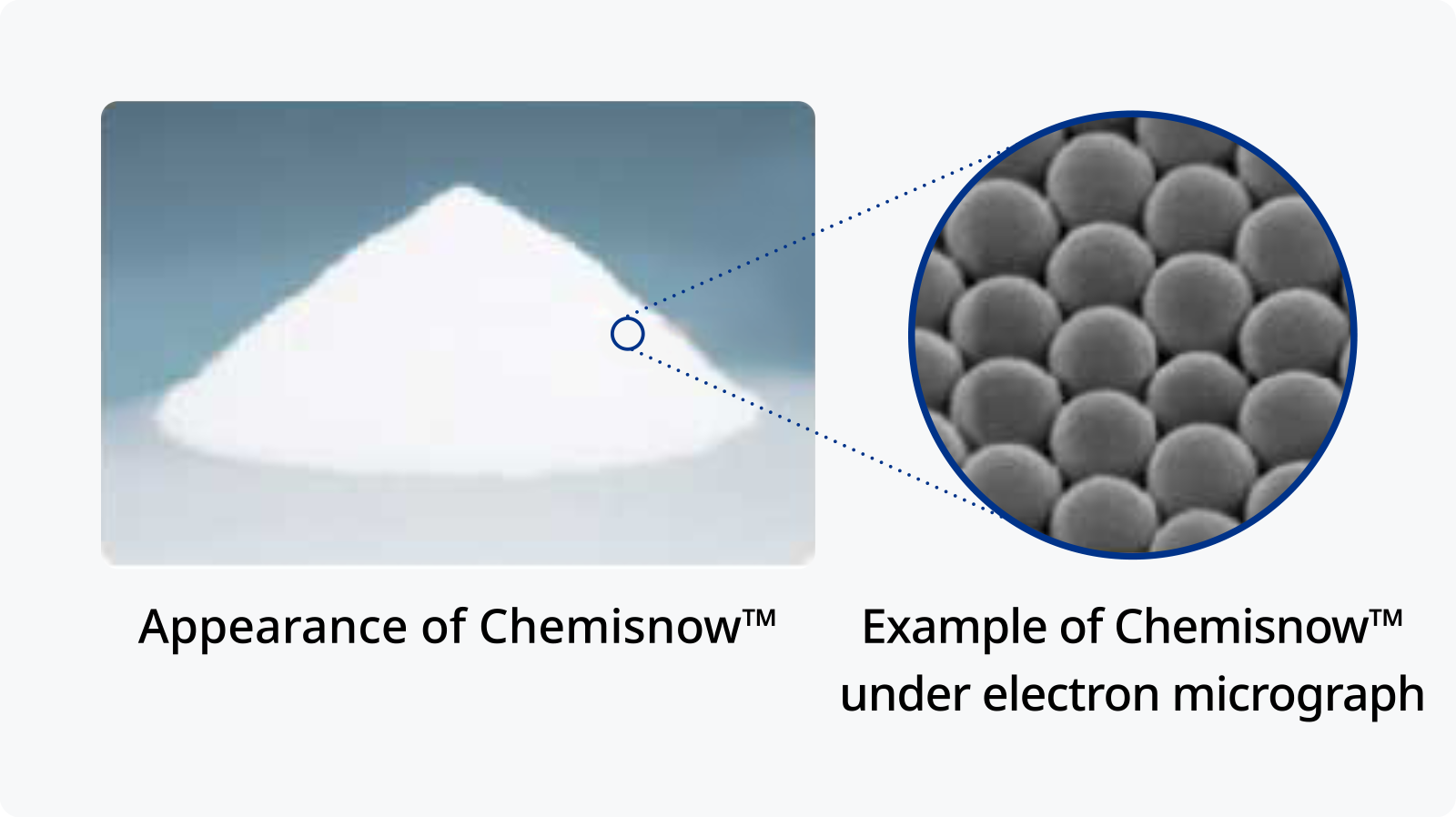
Chemisnow™ Features
Mixing the Chemisnow™ acrylic resin particles with other materials endows it with various characteristics, making it versatile for a wide range of applications.
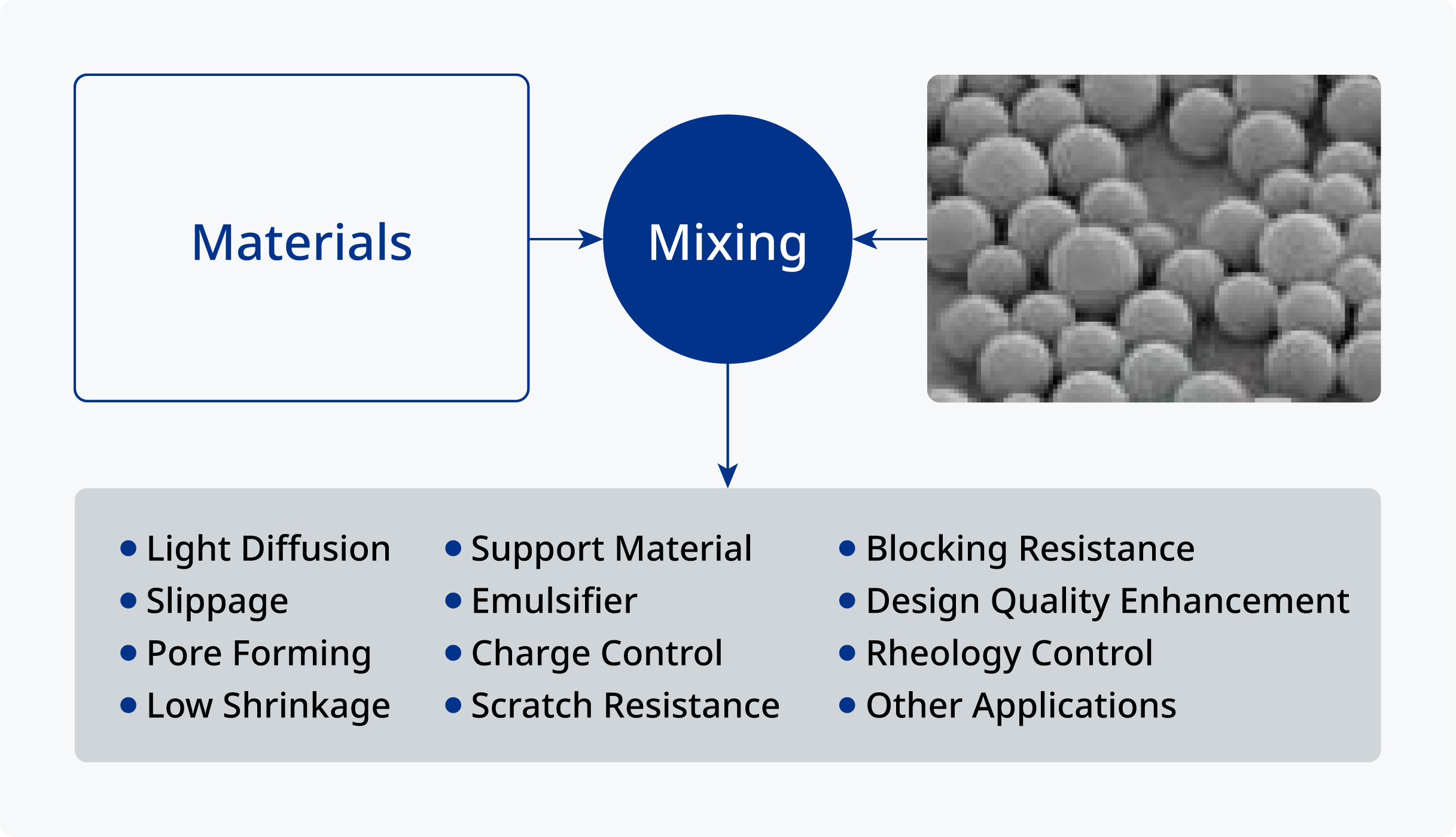
Features of Acrylic Resins

Applications
Thanks to its functionality, Chemisnow™ is used in a variety of applications, including as a light diffusion agent in liquid crystal displays (LCDs), a matting agent in paints, and an external additive for toners.
Liquid Crystal Displays (Light Diffusion)
Chemisnow™ has a long track record of use in LCDs due to its transparency and light diffusion properties. Both the MX Series, with its narrow-dispersion particles, and the MZ Series, a line of middle-dispersion particles, have characteristics that can increase luminance.
Our other series offer improved solvent resistance and heat resistance, which allows us to provide custom solutions using fine particles suited to specific applications.
Light Diffusion Sheets
Chemisnow™ is indispensable for the development of high-luminance light diffusion sheets. Primarily used as a light diffusion agent, Chemisnow™ particles can also be employed for the anti-blocking layer on the reverse side of the sheet.
Diagram of a Light Diffusion Sheet

Recommended Series
- MX Series | Crosslinked Acrylic Monodispersed Particles
- MZ Series | Crosslinked Acrylic Moderately Dispersed Particles
- KMR Series | High Heat-Resistance Grade Polydispersed Particles
Light Diffusion Plates
Chemisnow™ is also used as the light diffusion agent for light diffusion plates.
With their heat-resistant properties, the KMR and KSR Series can also be used for PC resin with high kneading temperatures.
Diagram of a Light Diffusion Plate

Recommended Series
- KMR Series | High Heat-Resistance Grade Polydispersed Particles
- KSR Series | High Heat-Resistance Grade Polydispersed Particles
KMR Series Optical Data
*Can be scrolled horizontally
| Substrate: PC resin | Substrate: PS resin | ||||||
|---|---|---|---|---|---|---|---|
| Product no. | Amount of particulate additives (%) | Diffusion rate (%) | Transmittance (%) | Haze (%) | Diffusion rate (%) | Transmittance (%) | Haze (%) |
| KMR-3TA | 2 | 76 | 55 | 99.3 | 70 | 58 | 99.8 |
| 3 | 84 | 52 | 99.6 | 79 | 54 | 99.8 | |
| 4 | 88 | 50 | 99.6 | 90 | 50 | 99.8 | |
- Note: Evaluation conducted on samples where resin and particles were mixed into pellets and then injection-molded into a two-mm-thick resin plate.
Paints
Chemisnow™ is used as a matting agent in paints for building materials and automobiles.
Compared to inorganic matting agents, it enhances the paint's weather and scratch resistance and offers excellent dispersibility within the paint.
About Matting

Recommended Series
- MZ Series | Crosslinked Acrylic Moderately Dispersed Particles
- KMR Series | High Heat-Resistance Grade Polydispersed Particles
Adding Chemisnow™ to paint causes the particles that emerge on the paint coat's surface to scatter light, resulting in a matte effect.
Coating Gloss and Particulate Additive Data
Data on 60° gloss of a paint coat with the MZ Series added and a dry film thickness of approximately 27 μm.
This information is provided for reference purposes when considering the MZ Series.

Solvent Resistance Data
The MZ and KMR Series, being highly crosslinked, exhibit superior solvent resistance compared to our standard crosslinked products (MR Series).
*Can be scrolled horizontally
| Series name | Degree of crosslinking | Methyl ethyl ketone | Ethyl acetate | BuAc | Cyclohexanone | Toluene |
|---|---|---|---|---|---|---|
| MZ Series | Ultra-high | +++ | +++ | +++ | +++ | +++ |
| MR Series | Standard | + | + | ++ | +++ | + |
- Solvent resistance is expressed as +++ > ++ > + > -.
Toner
Chemisnow™ has a proven track record as an external additive for toners used in multifunction devices. The addition of fine particles, depending on their particle size and charge properties, can improve the flowability and cleanability of toner. It is also effective as a charge control aid for toner.
Our MP Series is used as both a cleaning property modifier and a charge control aid for toner.
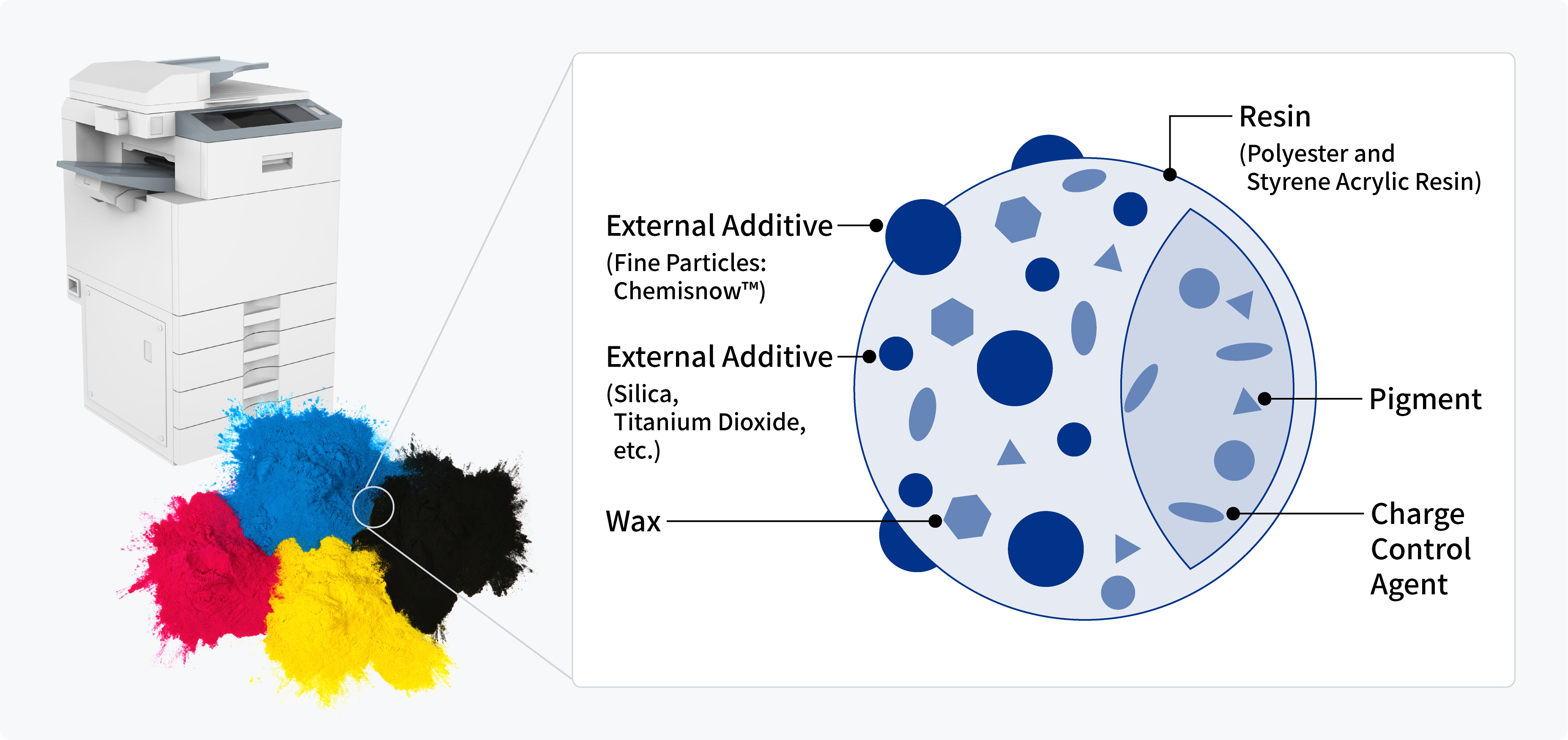
Recommended Series
- MP Series | Non-Crosslinked Acrylic Particles
Cosmetics
Adding Chemisnow™ to foundations can provide soft focus effects and improve makeup application.

Benefits
Soft Focus Effects
The light-diffusing properties of Chemisnow™ provide soft-focus effects.
Improve Makeup Application
Mixing Chemisnow™ with inorganic pigments improves the fluidity of foundations and other products and improves makeup application.
For liquid foundations, we also offer non-dissolving crosslinked types and product numbers with excellent water dispersibility.
Recommended Series
- MR Series | Crosslinked Acrylic Polydispersed Particles
- MP Series | Non-Crosslinked Acrylic Particles
Anti-Blocking Agents
Kneading Chemisnow™ into a film or coating creates a rough surface on the film, which helps to prevent the surface from sticking to other films.
Compared with inorganic alternatives, Chemisnow™ is much more transparent and, therefore, is unlikely to adversely affect the appearance of the film on which it is applied.
- Note: No products have been confirmed or registered under the voluntary standards of the Japan Hygienic Olefin And Styrene Plastics Association (JHOSPA).
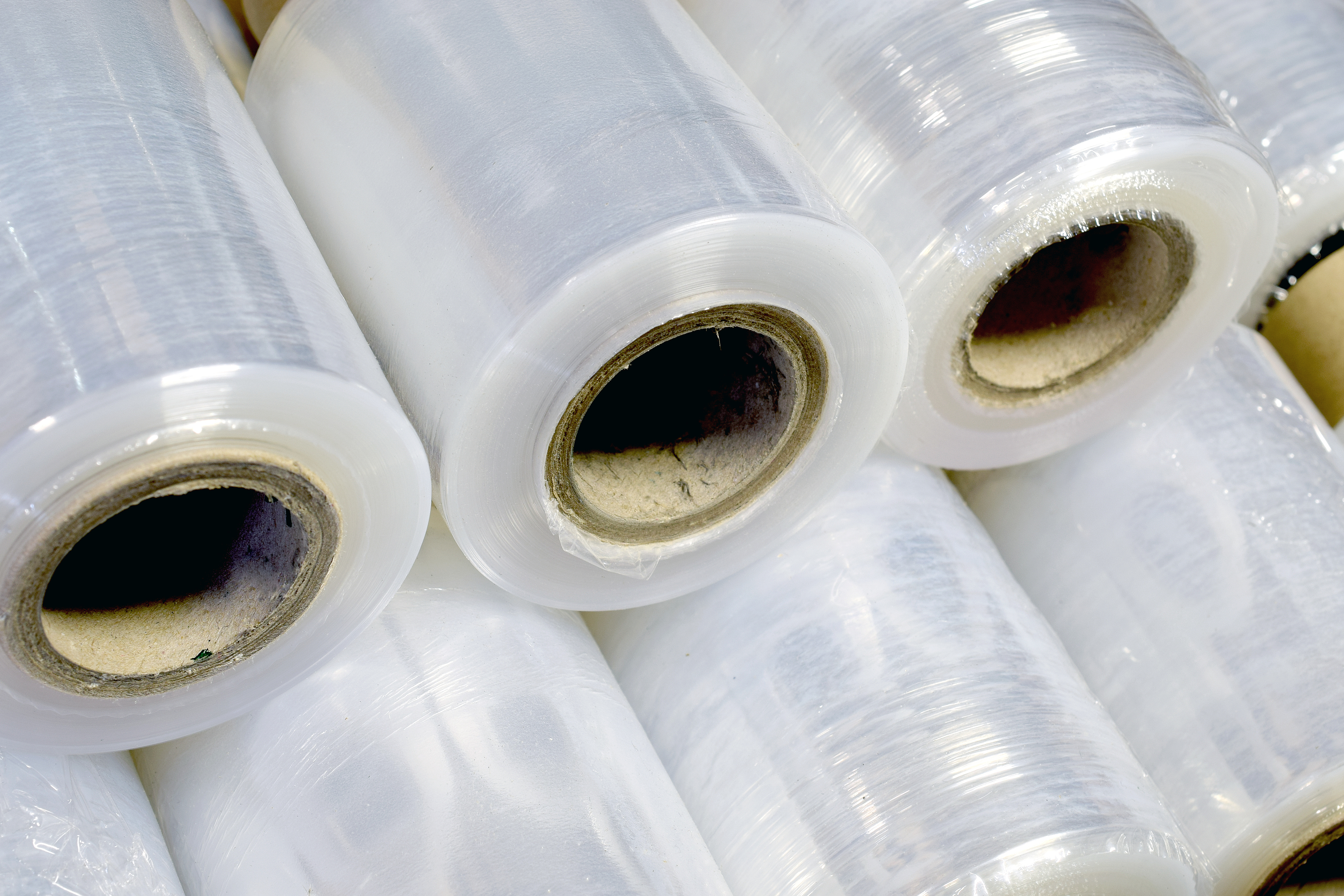
About Anti-Blocking

Recommended Series
- MX Series | Crosslinked Acrylic Monodispersed Particles
- MR Series | Crosslinked Acrylic Polydispersed Particles
- KMR Series | High Heat-Resistance Grade Polydispersed Particles
- KSR Series | High Heat-Resistance Grade Polydispersed Particles
The unevenness created by fine particles reduces contact points between adjoining films. This prevents scratching and helps to prevent the films from sticking to each other.
FRP (BMC/SMC)
Chemisnow™ has a long track record as a low-shrinkage agent in the FRP molding process, offering excellent colorability properties in the molded product (SMC/BMC).
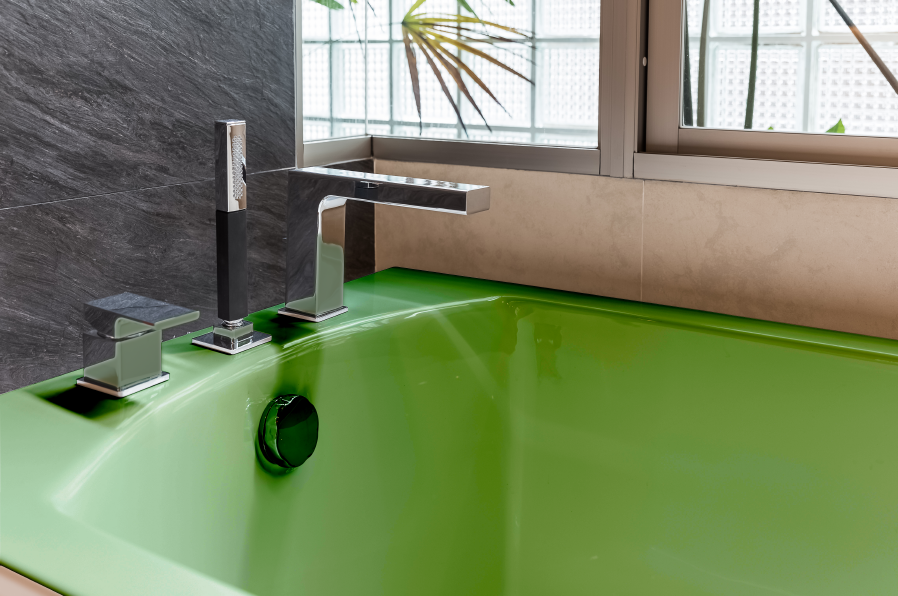
Benefits
Example of products molded with low-shrinkage agents


The Chemisnow™ SGP Series yields moldings with superior colorability compared to conventional polymer low-shrinkage agents.
Recommended Series
- SGP Series | Crosslinked Styrene Polydispersed Particles
Macroporous Material Fabrication (Pore Forming Agent)
Mixing and molding Chemisnow™ with other materials allows for macroporous material fabrication via organic solvent dissolution or thermal decomposition.

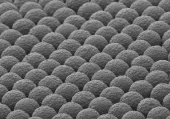
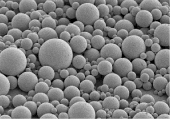
Particle Size and Size Distribution
*Can be scrolled horizontally
| Series name | MX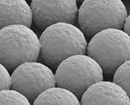 |
MZ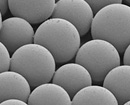 |
MR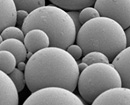 |
KMR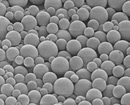 |
MP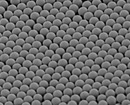 |
|---|---|---|---|---|---|
| Type | PMMA | PMMA | PMMA | PMMA | PMMA |
| Size (μm) | 0.8–30 | 5–30 | 1–10, 200< | 3 | 0.15–0.4 |
| Distribution | Monodispersed | Moderate distribution | Polydispersed | Polydispersed | Monodispersed |
| Crosslinked | Crosslinked | Crosslinked | Crosslinked / Non-crosslinked | Crosslinked | Non-crosslinked |
| Features / Strengths | Excellent size uniformity | Ultra-high solvent resistance | Low thermal decomposition | Heat resistance | Submicron size |
Recommended Series
- MX Series | Crosslinked Acrylic Monodispersed Particles
- MZ Series | Crosslinked Acrylic Moderately Dispersed Particles
- MR Series | Crosslinked Acrylic Polydispersed Particles
- KMR Series | High Heat-Resistance Grade Polydispersed Particles
- MP Series | Non-Crosslinked Acrylic Particles
Solvent Resistance
*Can be scrolled horizontally
| Water | Methanol | Methyl ethyl ketone | Ethyl acetate | Toluene | |
|---|---|---|---|---|---|
| Solvent soluble type | Insoluble | Insoluble | Soluble | Soluble | Soluble |
| Solvent resistant type | Insoluble | Insoluble | Insoluble | Insoluble | Insoluble |

Comparison Residuals after Thermal Decomposition
*Can be scrolled horizontally
| Natural polymer: Ethyl cellulose | Synthetic polymer: Polyvinyl butyral | Our product (A) | Our product (B) | |
|---|---|---|---|---|
| Heating residue (%) | 9.5 | 2.5 | 0.2 | 0.02 |
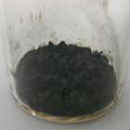 |
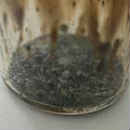 |
 |
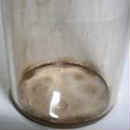 |
- Calculated as ([Residual component weight after heating the sample at 500°C for 15 minutes under a nitrogen atmosphere]/measured sample weight) x 100
Thermal Decomposition Behavior

Product Lineup
- Note: The data listed are for reference only and are not standard values.
In addition, there is no guarantee that the listed uses will not infringe on any patents.

